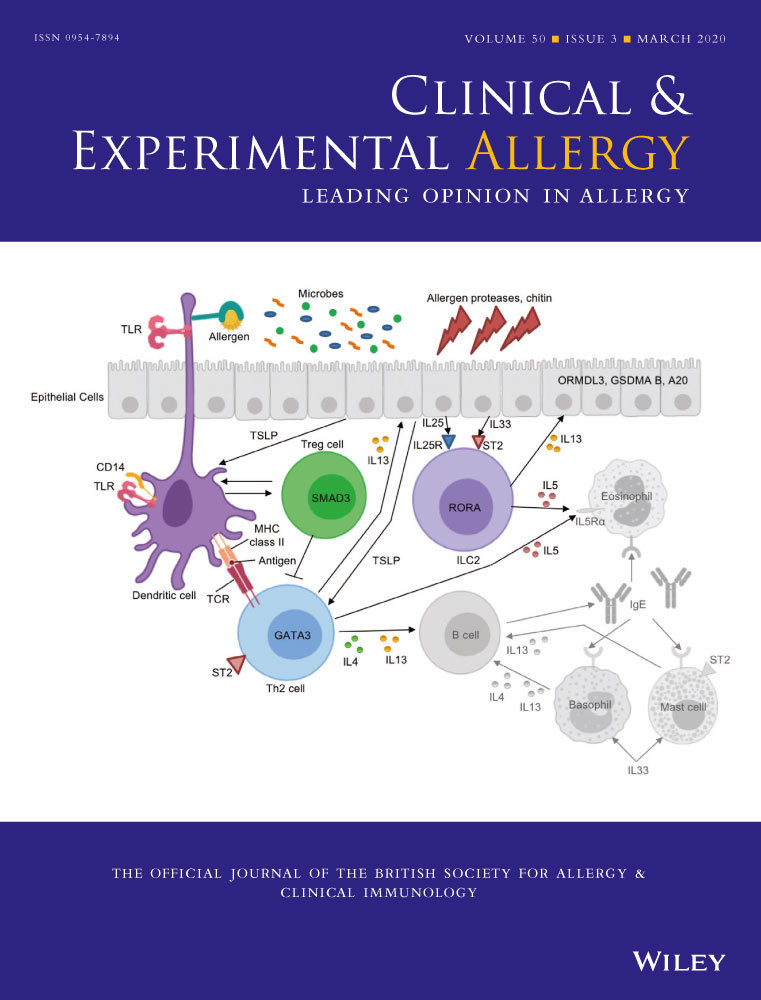Oestrogen amplifies pre-existing atopy-associated Th2 bias in an experimental asthma model
Abstract
Background
The prevalence and severity of asthma, particularly the most common (atopic) form of the disease, increase amongst females but not males after puberty, and asthma activity also changes throughout the menstrual cycle and during pregnancy. The contribution of female sex hormones to asthma pathogenesis is incompletely understood.
Objective
To obtain insight into the role of oestrogen (E2) in experimental atopic asthma, and guide future research on sex-related variations in atopic asthma susceptibility/intensity in humans.
Methods
We utilized an experimental model comprising rat strains expressing dichotomous Th2-high vs Th2-low immunophenotypes exemplified by eosinophilia, mirroring differences between human atopics/non-atopics. We compared the efficiency of Th2-associated immunoinflammatory mechanisms, which differed markedly between the two strains, and between sexes in the Th2-high strain, and determined the effects of E2 administration on these differences.
Results
Unique to the Th2-high strain, eosinophil: neutrophil ratios in the airways at baseline and following sensitization/aeroallergen challenge were logfold higher in females relative to males, and this was reflected by higher baseline blood eosinophil numbers in females. Pretreatment of Th2-high males with E2 abrogated this sex difference by selectively boosting Th2-associated genes in the airways and eosinophilia, but was without corresponding effect in the Th2-low strain. In contrast, parallel E2 effects on myeloid and lymphoid cell populations were relatively modest.
Conclusions and Clinical Relevance
E2 acts to amplify the eosinophilic component of pre-existing Th2-high immunophenotype, possibly acting at the level of the common eosinophil/neutrophil precursor in bone marrow to preferentially drive eosinophil differentiation. Constitutive granulocyte profiles in which the balance between eosinophils and neutrophils is skewed towards eosinophils have been identified in independent cohort studies as markers of asthma risk, and these findings suggest that more detailed studies on the role of E2 in this context, and in relation to asthma pathogenesis in post-pubertal females in particular, appear warranted.
CONFLICT OF INTEREST
The authors declare no conflict of interest.
Open Research
DATA AVAILABILITY STATEMENT
The data that support the findings of this study are available on request from the corresponding author. The data are not publicly available due to privacy or ethical restrictions.




